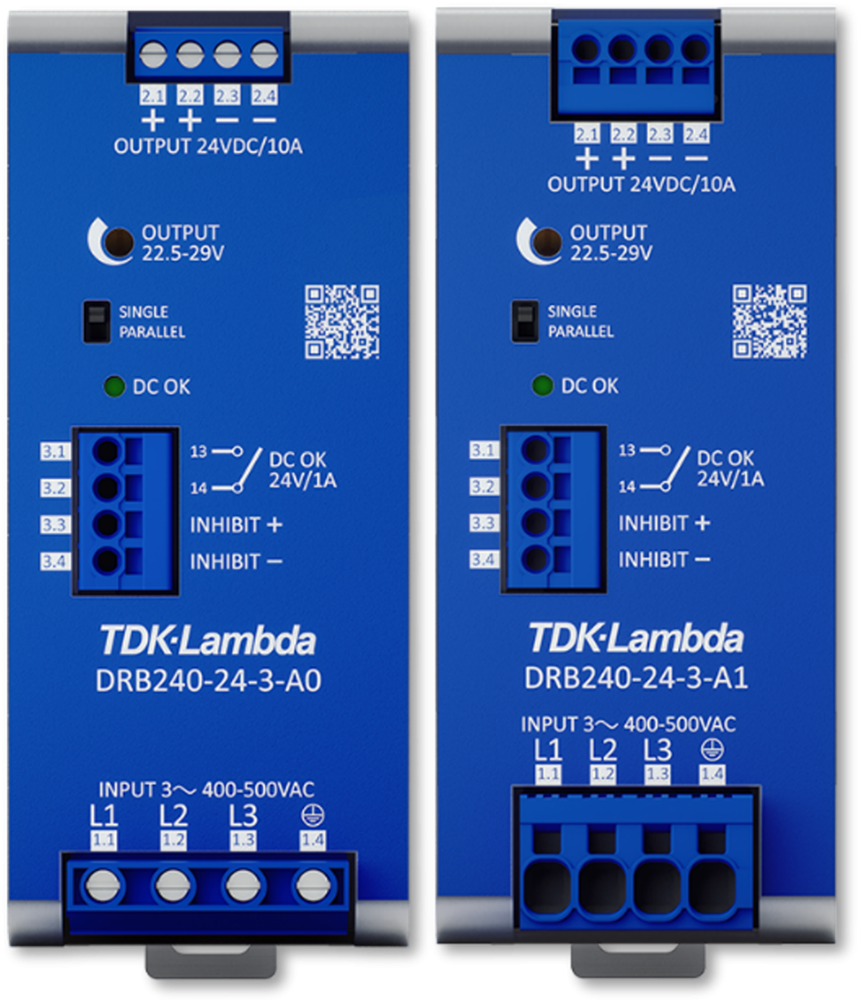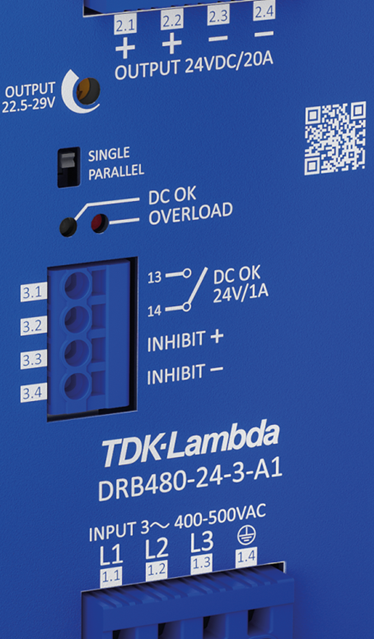Using DIN rail power supplies with push-in connectors
Monday, January 29, 2024
At first glance, relying on push-in wires for the AC input and the DC output cables for a 960W 40A power supply might seem a little risky! In fact, many companies like panel builders machine designers are embracing this approach. They are using it to automate their manufacturing processes, saving both time, money and improving reliability.
TDK-Lambda’s recently launched DRB series of three phase input DIN rail mount power supplies offers a choice of either connections to be made via conventional screw terminals or push-in wires (Figure 1).

Figure 1: DRB240 with screw terminals (left) or push-in terminals (right)
The plug-in connector manufacturers test to IEC 61373. This is the shock and vibration standard for the rail industry and railway rolling stock, which is a much harsher environment than many industrial products are subjected to.
Push-in connector wiring does not need to be checked or readjusted like screw terminals. There is no risk of a loose screw dropping inside of a cabinet which may cause an electrical short. Insertion is tool-free and the removal of the wire is simple, requiring a normal screwdriver to release the wire. The assembly time is approximately 5 seconds compared to 10 seconds for a screw terminal.
Crimped ferrules can be used for wire termination and is mandated in Europe to comply with the CE mark directives. Many US companies are using them for stranded wires too, particularly in high end equipment, as it reduces contact resistance and potential oxidization between the strands.
Push-in terminals lend themselves to robotic or automated assembly, which can reduce wiring times. TDK-Lambda has provided E-plan™ data sets for the DRB 3-phase models for use with software to design solutions for machine builder, panel builders and many other industrial applications.
A closer look at the DRB front panel (Figure 2) shows two other features that have been added. Next to the terminal blocks are unique connection identifiers for the end-user wiring diagram (1.1, 1.2, 1.3 etc) A QR code provides a web link that will direct the user to further documentation.

Figure 2: A close up of the DRB front panel
In summary, push-in connectors offer secure terminations, lower labor costs and the potential for automated wiring. It is worthwhile considering for your next project.
Power Guy





